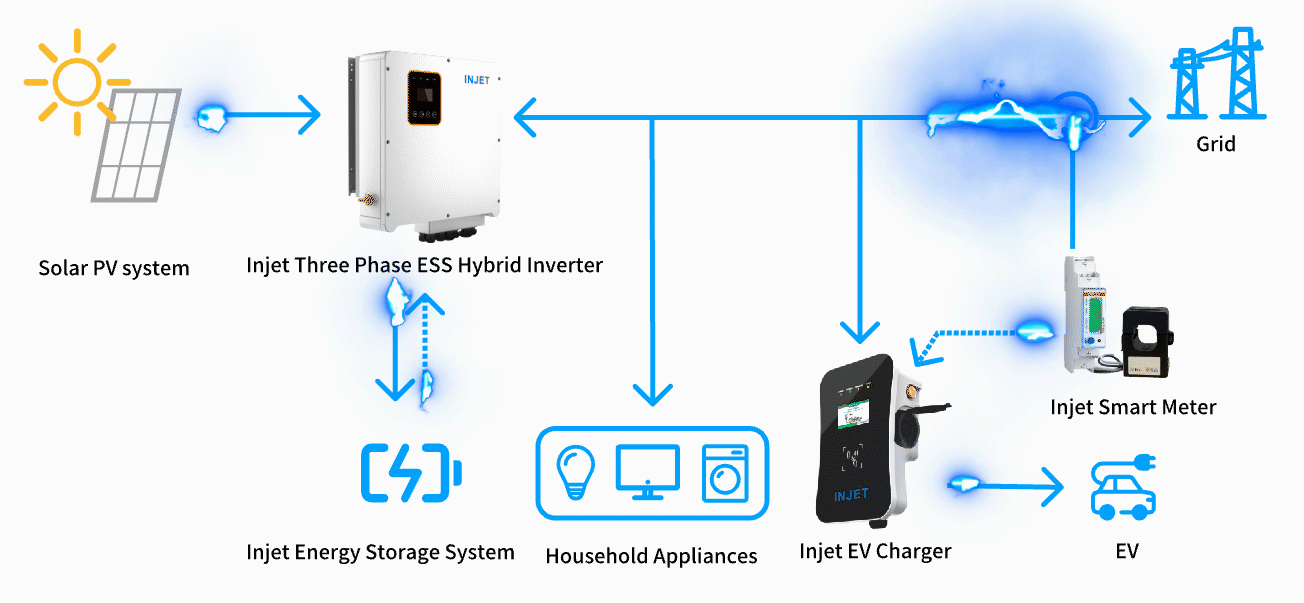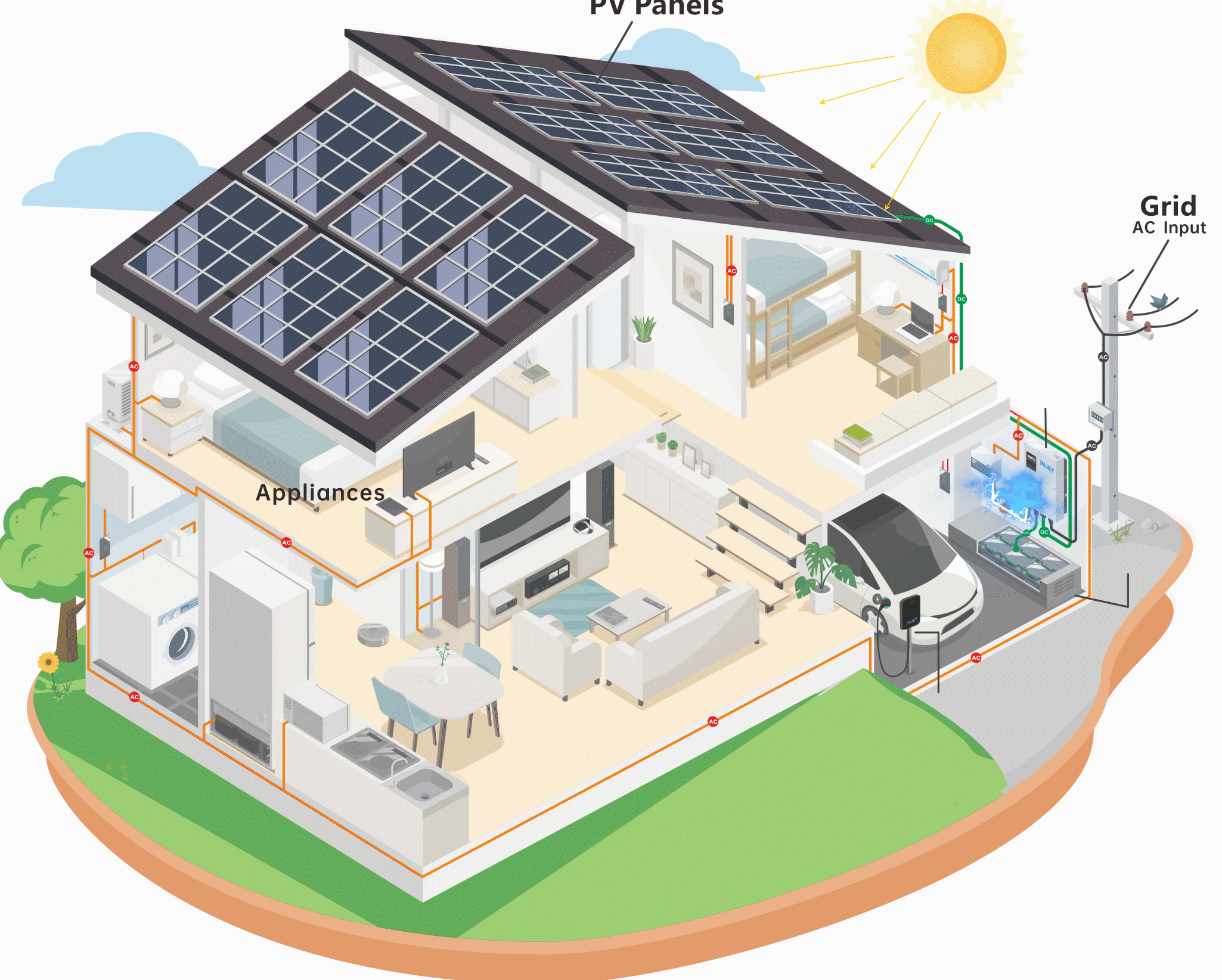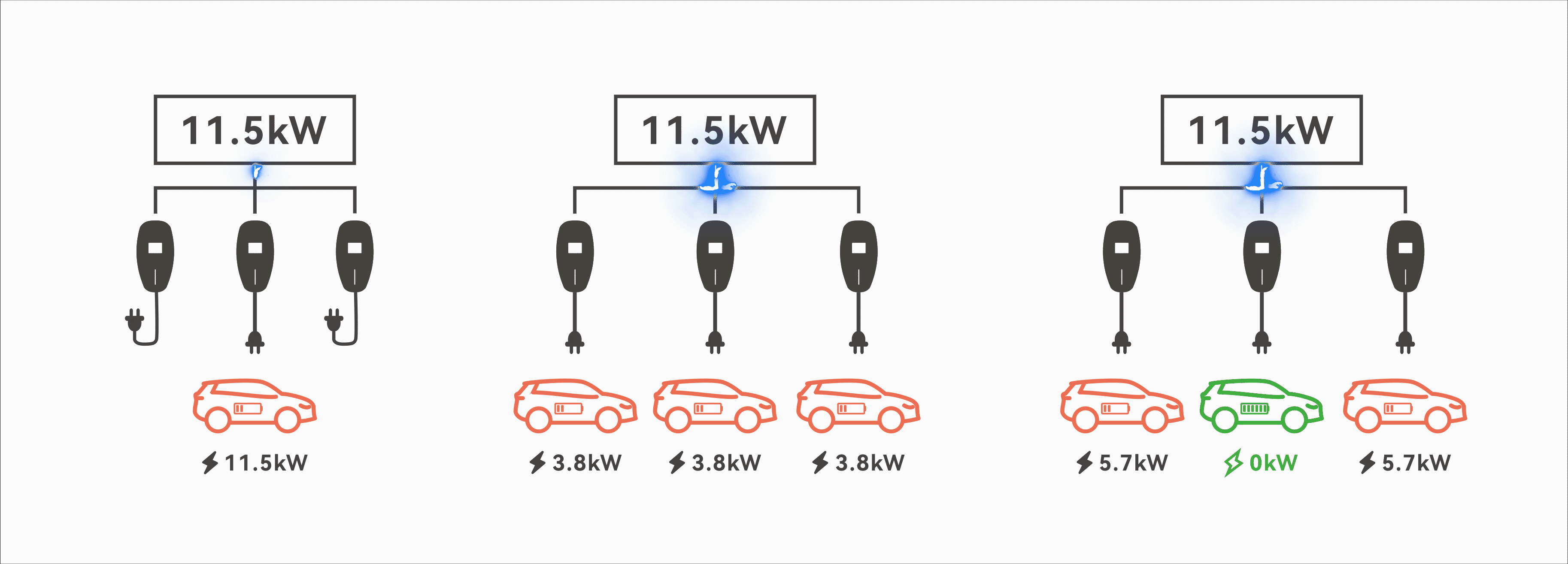As electric vehicles (EVs) become increasingly popular, the need for efficient and reliable charging infrastructure grows in tandem. Load balance management in EV chargers plays a pivotal role in optimizing energy distribution, ensuring a seamless charging experience, and avoiding strain on the electrical grid.
Load balance management refers to the intelligent distribution of electrical load across multiple EV chargers or charging points. Its primary objective is to optimize the utilization of available electricity resources while maintaining grid stability. By dynamically adjusting the charging rates of individual EVs based on factors such as grid capacity and overall demand, load balance management helps prevent grid overloads and ensures a reliable power supply.
Key Functions and Benefits:
* Grid Stability and Reliability:
Load balance management is essential for maintaining grid stability. As EVs require significant amounts of electricity for charging, an uncontrolled surge in demand during peak hours could overload the grid. By spreading out the charging load across different times and locations, load balance management helps minimize grid strain, reduce the risk of blackouts, and ensure a consistent and reliable power supply for all consumers.
* Optimal Resource Utilization:
Efficient utilization of electricity resources is crucial for sustainable energy management. Load balance management enables the intelligent distribution of available electrical load, avoiding underutilization or wastage of resources. By optimizing charging rates and considering factors like renewable energy availability, load balance management helps integrate renewable sources into the grid effectively, enhancing the overall sustainability of the charging infrastructure.
* Cost Optimization:
Load balance management offers cost optimization benefits for both EV owners and grid operators. By encouraging EV owners to charge during off-peak hours through dynamic pricing strategies, load balance management helps reduce the strain on the grid during peak periods. It also enables grid operators to avoid costly infrastructure upgrades by intelligently managing charging loads and leveraging existing resources more efficiently.
* Enhanced User Experience:
Load balance management significantly enhances the charging experience for EV owners. By distributing the charging load intelligently, it minimizes waiting times, reduces congestion at charging stations, and ensures a smoother and more predictable charging process. Additionally, load balance management systems can prioritize charging based on factors like urgency or user preferences, further improving the user experience and overall customer satisfaction.
* Scalability and Future-readiness:
As EV adoption continues to grow, load balance management becomes increasingly critical. Implementing intelligent load management systems from the outset ensures scalability and future-readiness of the charging infrastructure. These systems can accommodate the increasing number of EVs without putting undue strain on the grid or requiring significant infrastructure upgrades, making them crucial for supporting the long-term sustainability of electric mobility.
Load balancing management plays a vital role in optimizing energy distribution and ensuring a seamless charging experience for both home and commercial EV charging.
Load Balancing Management for Home Use:
* Optimal Utilization of Home Electrical Capacity:
Home charging stations often have a limited electrical capacity. Load balancing management in home EV chargers helps optimize the utilization of available capacity, ensuring that the charging process does not overload the home's electrical system. By monitoring the overall electrical load and dynamically adjusting the charging rate, load balancing management ensures efficient and safe charging without putting unnecessary strain on the home's electrical infrastructure.
* Time-of-Use Optimization:
Many residential areas have time-of-use electricity pricing, where electricity costs vary depending on the time of day. Load balancing management enables homeowners to take advantage of these pricing schemes by scheduling their EV charging during off-peak hours when electricity rates are lower. This not only reduces charging costs but also helps distribute the load on the grid more evenly, contributing to overall grid stability and efficiency.
* Integration with Renewable Energy Sources:
Load balancing management systems in home EV chargers can integrate with renewable energy sources, such as solar panels. By intelligently monitoring the energy production from solar panels and adjusting the charging rate accordingly, load balancing management ensures that EVs are charged using clean energy when available. This integration promotes sustainable energy practices and reduces reliance on the grid, making home charging more environmentally friendly.
Load Balancing Management for Commercial Use:
* Efficient Distribution of Charging Load:
Commercial charging stations often serve multiple EVs simultaneously. Load balancing management plays a crucial role in evenly distributing the charging load among the available charging points. By dynamically adjusting the charging rates based on overall demand and available capacity, load balancing management minimizes the risk of overloading the electrical infrastructure and optimizes resource utilization. This ensures that each EV receives an appropriate and efficient charging experience.
* Demand Management and Grid Stability:
Commercial charging stations are susceptible to high charging demand during peak hours, which can strain the grid. Load balancing management systems enable demand management by communicating with the grid and adjusting charging rates based on grid conditions and overall demand. This helps alleviate the pressure on the grid during peak periods, promotes grid stability, and avoids costly infrastructure upgrades.
* User Experience and Payment Flexibility:
Load balancing management systems in commercial charging stations enhance the user experience by minimizing waiting times and ensuring reliable and efficient charging services. These systems can prioritize charging based on user preferences, urgency, or membership tiers, further improving customer satisfaction. Moreover, load balancing management allows for flexible payment options, including dynamic pricing schemes based on electricity demand, enabling cost optimization for both charging station operators and EV owners.
Load balancing management plays a critical role in ensuring optimal and efficient charging experiences for electric vehicles, whether for home or commercial use. By intelligently distributing the charging load, load balancing management optimizes resource utilization, promotes grid stability, and enhances the user experience. In the transition towards sustainable transportation, investing in robust load balancing management systems for electric vehicle chargers is essential to support the increasing demand for electric mobility and create a reliable and efficient charging infrastructure for all.



